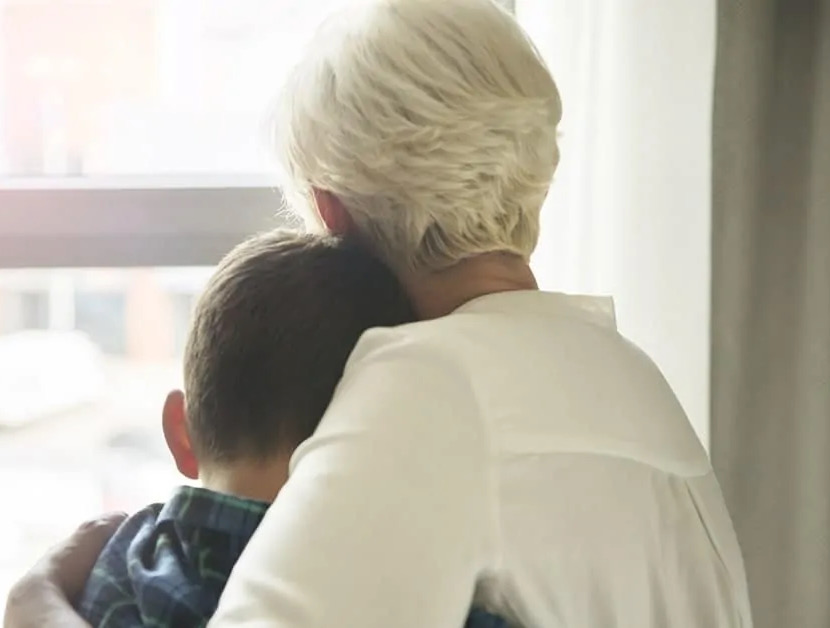Many kids are now home for possibly weeks due to school closures to help slow down the spread of the Coronavirus outbreak. In some locals, families are being asked to stay in their homes for several weeks, with only a few allowable options for occasionally getting out. All of us are a bit anxious, and probably even after a couple of days of staying in the home, start suffering from “cabin fever.” We all have questions, and we all need answers. For parents, it’s important to share information that is appropriate for the age of your children to help them cope.
Here are a few tips on how to discuss this topic with your kids.
Be honest about what is going on. Start by asking your child what he or she knows about it. Ask your child if he or she has any questions. Share basic information in their terms. Keep it simple and avoid facts and figures and projections related to how serious it will get and how long it will last. The truth is, we don’t know. You might say scientists are learning more each day so they can provide us with tips on how we can stay safe and healthy. I will check every day for new information and share it with you. Ask them how they are feeling. Validate their feelings by acknowledging that it is okay to feel that way. Give them a hug. Let them how you feel. Tell your child that the best advice right now is to stay home as much as possible, so we don’t catch it from someone. Talk to them about social distance, which means staying 6 feet away from others except for your family or people that can help us in a protective environment. Teach them about appropriate handwashing. Let them pick the song they would like to sing (must be at least 20 seconds long) while they are washing their hands. Encourage them to drink lots for water and eat healthy food. Tell them it is important to get enough exercise and plenty of sleep. If you do not have access to get outside for exercise, find ways to do simple physical activity in your home.
Here are a few tips for helping kids learn to cope with and handle anxiety.
First, ask your child how he feels. If he says he is fine, tell him you are glad to hear that. If he says that he is worried, let him know that you understand. In either case, say something like this, “sometimes big changes or uncertainty can make us all feel a little anxious. The best thing to do is practice being relaxed. That helps us to stay calm and safe. I learned a few things that help me feel calm and safe. Let’s practice them together”.
The best tool for helping anyone reduce anxiety and keep calm is deep breathing. Our nervous system is programmed to trigger the “flight, fight or freeze” mode when faced with an emergency. Once the emergency has ended, our nervous system will go back to a relaxed state. The problem is that our nervous system responds similarly to a real or an imagined emergency. When we are under prolonged stress, the nervous system continues in the emergency mode, which results in chronic anxiety and the continuous release of cortisol, which is harmful to our health.
Research has shown that deep breathing will trigger “the relaxation response” and cause us to return to a normal state, which is beneficial to both mental and physical health. Deep breathing means “belly breathing.” Most people only do chest breathing, which is shallow compared to “belly breathing” using the diaphragm muscle rather than the chest muscles.
There are several ways to test if you are breathing deeply enough:
- Stand or sit down on a chair. Place one hand on your chest and the other on your abdomen. When you breathe in, your abdominal area should rise. If not, you are not taking a truly deep breath.
- Lie down and put a book on your abdomen. If the book raises when you breathe in, then you are getting a deep breath.
If you are not naturally breathing deeply, then you need to practice. One way is to use either 1 or 2 above to see how well you are doing and practice until you are successful. You should practice taking ten deep breaths three times per day. If you are feeling stressed, pause for a moment and take ten deep breaths. You will be amazed at how well this works to restore a sense of calm.
For children, I usually have them use the book method. Older kids can practice, as outlined above. Another approach is to help them have them visualize an elevator and to see the elevator go up when they breathe in and go down when they breathe out. Again they should practice several times a day. Younger children will benefit from coaching from a parent or even better practice together. Another method is the “lazy eight” breathing technique. Draw a large eight lying on its side. Have your child practice by slowly tracing the eight with their finger while breathing in on the right side and breathing out on the left side. Another is “triangle breathing.” Draw a triangle. Again have them trace the triangle while breathing in going down the right side, holding their breath going across the bottom of the triangle and then breathe out going up the left side. They should breathe in, hold their breath, and breathe out for 3 or 4 seconds each.
Once they master deep breathing, have them add going to a particular place after they have taken ten deep breaths. By the end of the breathing exercise, their eyes should be closed. Ask them to imagine they are in a particular place doing something they like to do. This could be the beach, lake, mountains, park, woods, or fantasy destination. Remind them that they should start practicing several times per day. Once they have mastered these techniques, they should still practice once or twice per day. Also, remind them that the minute they feel worried or upset, they should pause, and do both deep breathing and going to their special place. If they are angry, I suggest counting to 10 before going to deep breathing and their special place. I tell kids that the counting switches from the “angry brain” to the “thinking brain,” which will help them problem solve once they are feeling calm and safe.
Meditation is another method that is very helpful in managing stress but also assuring a sense of peace and calm throughout the day. Meditation has also been shown through research to provide many additional benefits, including improving concentration and memory, reducing anxiety and depression, and improving health, including sleep, blood pressure, and chronic stress.
Here are a few tips on how to cope with being isolated and restricted to your home.
Handling “cabin fever” requires having interesting things to do to stay occupied. It also requires being on a schedule. Kids and adults both need structure. Structure is provided or imposed when we are at work or school. You should sit down and work together to come up with a schedule of activities for the day that specifies specific times for each activity. Go over the schedule at the beginning of the day. If school closures last for more than two or three weeks, school districts will most likely implement distance learning. Some school districts already have, and many colleges and universities have done the same just as many places of employment have moved to working from home.
While periods of solitude can be very beneficial, when it is imposed, it will most likely feel like solitary confinement. Your kids will need a variety of activities to keep them engaged in activities that are interesting as well as productive and beneficial. That does not mean sitting and watching a variety of YouTube videos or moving from one level to the next on their video game. Reading books, spending time on educational websites, playing with toys, practicing music, engaging in a hobby or craft project, or viewing “A” video are some examples. They should get at least 30 minutes to an hour of exercise each day. Bedtime and mealtime should be consistent.
Get outside, even if it is just walking around your neighborhood. Your kids can walk, ride a bike or skateboard, jog. Encourage them to play outside as weather permits. Go to your local park if permitted in your area. Be sure to stay at least six feet away from others. Everyone needs to wash their hands thoroughly when they have been out in public places. Keep your hands away from your face.
Finally, to counteract the isolation efforts should be made to stay connected with each other as well as with friends and family members. Families could have group Facetime sessions with relatives. Kids and adults should spend some time talking, chatting, texting, emailing, or Facetime or Skype with friends. Use family meals as a time to set and connect with each other. (This means NO digital devices for anyone during the meal). Discuss how you are feeling, new updates, what you did for fun, or share a joke or funny story. Plan family fun time for later in the evening. This could be family game night, family movie night, family karaoke time, getting some exercise with a video game system like Wii Fit, dancing, working on a puzzle together, doing yoga, or whatever else you enjoy doing together. Finally, parents should try to have one on one time not only with each other but with each kid. This could be reading together, having a chat, playing a game one on one, working on a craft or art project, or with younger children just some plain old playtime.
(Courtesy Child Development Institute)





Leave Your Reply